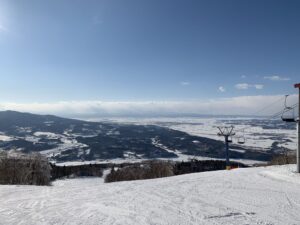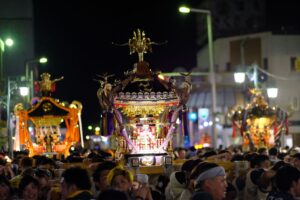
Part 1: Overview of Japanese Ski Resorts and Investment Value
Introduction
Japanese ski resorts are becoming increasingly popular among international investors due to their world-class snow, cultural appeal, and expanding infrastructure.
In this two-part series, we explore Japan’s ski resorts from an investment perspective.
This first article provides a comprehensive overview of the major ski resort areas and their investment appeal.
The second article will focus on specific recommendations for regions that offer the most promising opportunities for real estate investment based on accessibility,
rental demand, and future growth potential.
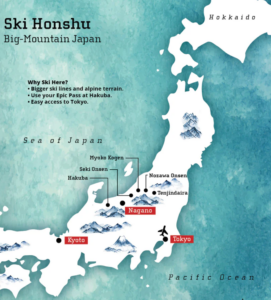
1. Strengths and Weaknesses of Japanese Ski Resorts
Strengths
1. Snow Quality
Japan’s ski resorts, particularly in Hokkaido and Nagano, are renowned for their powder snow, known as “Japow” (Japanese powder).
Niseko in Hokkaido has gained international fame for its world-class snow quality, while Hakuba in Nagano is also highly regarded among skiers.
Investment Insight:
The high-quality powder snow attracts a steady stream of international tourists,
ensuring consistent rental demand and profitability for real estate investors.
2. Cultural Appeal
Japanese ski resorts offer a unique combination of skiing and traditional cultural experiences, such as onsen (hot springs).
Resorts like Nozawa Onsen in Nagano and Naeba Ski Resort in Niigata allow visitors to enjoy hot springs after a day of skiing,
which enhances the overall experience.
Investment Insight:
The fusion of cultural experiences with skiing extends tourists’ stays and encourages repeat visitors,
boosting revenue for accommodations and real estate.
3. Accessibility
Many ski resorts in Japan are easily accessible from major cities like Tokyo and Osaka, making them ideal for weekend trips.
Resorts like Hakuba, Gala Yuzawa, and Naeba are accessible by Shinkansen (bullet train),
allowing tourists to reach them within a few hours from Tokyo.
Investment Insight:
Easy access from large metropolitan areas increases short-term rental demand, making these resorts attractive for property investors.
4. Safety and Infrastructure
Japan is known for its safety and strong infrastructure, including well-maintained ski facilities and reliable transportation.
These factors make Japanese resorts a comfortable and secure environment for tourists.
Investment Insight:
The safety and infrastructure of Japanese resorts appeal to family-oriented tourists and long-term investors,
ensuring steady demand for rentals.

Weaknesses
1. Lack of Global Recognition
Although resorts like Niseko and Hakuba are globally known, many Japanese resorts are less recognized compared to those in Europe and North America.
Resorts in regions like Gunma and parts of Niigata are not as well-marketed internationally.
Investment Impact:
Lower international visibility means these resorts require more aggressive marketing to attract foreign tourists and investors.
2. Seasonal Dependency
Many Japanese ski resorts rely heavily on the winter season for revenue, making it challenging to attract tourists during the off-season.
Some resorts are beginning to offer summer activities, but winter tourism remains the main focus.
Investment Impact:
Seasonal dependency creates fluctuations in revenue,
but developing year-round activities can reduce these risks and provide more stable returns.
3. Limited English Support
Smaller ski resorts often have limited English-speaking staff and services, making it difficult for international tourists to navigate.
This may deter some foreign visitors.
Investment Impact:
Investors targeting international markets may need to invest in improving English-language services
to attract non-Japanese-speaking tourists.
2. The Appeal of Japanese Ski Resorts
1. World-Class Powder Snow
Japan is world-famous for its pristine powder snow, particularly in regions like Hokkaido, Nagano,
and Niigata. This snow quality is a major draw for international tourists, providing high occupancy rates and strong returns for investors.
2. The Fusion of Hot Spring Culture and Skiing
Japanese resorts often combine skiing with hot springs (onsen), creating a relaxing après-ski experience.
Resorts like Nozawa Onsen and Niseko offer this unique blend, making them particularly attractive to foreign visitors.

3. Year-Round Activities
While winter sports are the primary attraction, many resorts are also promoting summer activities such as hiking,
mountain biking, golfing, and hot spring visits, ensuring a steady flow of tourists throughout the year.

3. Why Invest in Japanese Ski Resorts
1. Increase in Foreign Tourists
The Japanese government has made tourism a priority, resulting in a significant increase in foreign visitors,
particularly from Australia, China, and Southeast Asia. For example, the Hakuba Valley in Nagano sees over 360,000 foreign skiers annually.
Investment Insight:
The rise in foreign tourists has created a strong demand for accommodation,
with significant potential for high returns on real estate investments, especially in high-demand areas like Hakuba.
2. Growth Potential in Undeveloped Areas
Major resorts like Niseko and Hakuba are already established, but there are many emerging areas with significant growth potential.
Regions like Gunma, Niigata (such as Myoko and Yuzawa), and parts of Nagano offer affordable entry points for investors.
Investment Insight:
Early investment in underdeveloped regions offers substantial growth opportunities
as these areas expand and improve their infrastructure.
3. Year-Round Revenue Opportunities
Increasingly, Japanese ski resorts are promoting year-round activities, including hiking and cultural events.
Resorts like Hakuba and Naeba have expanded their offerings to attract summer tourists.
Investment Insight:
Diversifying resort offerings can help investors secure steady rental income throughout the year,
reducing the risk of seasonal fluctuations.
4.Stable Demand from Asian Markets
Japan’s proximity to major Asian markets such as China, South Korea, and Taiwan ensures a consistent stream of international visitors.
Resorts like Niseko and Hakuba are particularly popular among these tourists.
Investment Insight: The steady flow of visitors from nearby Asian countries helps maintain high occupancy rates,
reducing investment risks and ensuring stable returns.
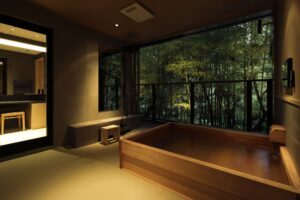
Top 5 Ski Resorts by Region
Hokkaido Area: Top 5 Ski Resorts (北海道)
- Hoshino Resorts TOMAMU
Tomamu is famous for its luxury accommodations, family-friendly atmosphere, and diverse ski terrain.
In addition to skiing, it offers attractions like Mina-Mina Beach, Japan’s largest indoor wave pool, and a winter Ice Village.
- Furano Ski Resort
Known for its scenic views and deep powder snow, Furano attracts seasoned skiers who prefer a quieter, traditional ski experience.
- Rusutsu Resort
Offering extensive slopes and a wide range of accommodations, Rusutsu is often seen as a strong alternative to Niseko,
with fewer crowds and a more peaceful atmosphere.

- Kiroro Ski Resort
Kiroro is known for its powder snow and upscale accommodations.
Its proximity to Sapporo makes it a convenient option for both tourists and investors.
- Niseko United
Niseko is one of the world’s most famous ski resorts, attracting a large number of foreign tourists with its excellent snow
and vibrant après-ski scene.
(Onsen in Gunma)
Tohoku Area: Top 5 Ski Resorts (東北地方)
- Appi Kogen (Iwate)
The largest resort in the Tohoku region, Appi Kogen offers a variety of slopes for all levels of skiers.
- Zao Onsen Ski Resort (Yamagata)
Famous for its “snow monsters” and hot springs, Zao Onsen provides a unique skiing experience
that blends natural beauty and traditional Japanese culture.
- Hachimantai Resort (Iwate)
A family-friendly resort with gentle slopes, Hachimantai is perfect for beginners
and those looking for scenic, relaxed skiing.
- Geto Kogen (Iwate)
Known for its deep powder snow and long ski season,
Geto Kogen is a hidden gem for advanced skiers.
- Alts Bandai (Fukushima)
Alts Bandai offers a wide variety of slopes and is popular among snowboarders and younger skiers.

Nagano Area: Top 5 Ski Resorts (長野県)
- Hakuba Valley
Hakuba is internationally known for its vast ski terrain and world-class facilities. It is one of Japan’s top destinations for international skiers.
- Nozawa Onsen
Nozawa Onsen is a traditional village known for its hot springs and excellent skiing, offering a unique cultural experience alongside great slopes.
- Shiga Kogen
Japan’s largest interconnected ski resort, Shiga Kogen offers a long ski season and a variety of terrain for skiers of all levels.
- Myoko Kogen
Myoko Kogen is famous for its powder snow and traditional atmosphere, providing a more laid-back experience for skiers.
- Madarao Kogen
Known for its off-piste skiing and tree runs, Madarao Kogen is popular among advanced skiers seeking adventure.
(Naeba and Tokyo;Only two hours from Tokyo)

Niigata Area: Top 5 Ski Resorts (新潟県)
- Myoko Kogen
Myoko Kogen straddles the border between Niigata and Nagano, offering excellent snow quality and a quieter experience compared to more commercial resorts.
- Naeba Ski Resort
One of Niigata’s most famous resorts, Naeba is known for hosting international events and offering a range of family-friendly facilities.
- Kagura Ski Resort
Kagura is a powder paradise, offering a long ski season and excellent backcountry skiing opportunities.
- Iwappara Ski Resort
Iwappara’s wide, gentle slopes make it ideal for families and beginners, with affordable accommodations nearby.
- Gala Yuzawa
Conveniently connected to the Shinkansen, Gala Yuzawa is one of the most accessible ski resorts from Tokyo, making it a top choice for day trips and weekend getaways.
*When visiting, we recommend the Joetsu Shinkansen, which can be reached in about 74 minutes at the fastest from Tokyo Station.
Get off at GALA Yuzawa Station or Echigo-Yuzawa Station.

Gunma Area: Top 5 Ski Resorts (群馬県)
- Marunuma Kogen
Marunuma Kogen is known for its high-altitude skiing and reliable snow conditions, making it a favorite for intermediate and advanced skiers.
- Kawaba Ski Resort
Kawaba is a well-maintained resort offering a variety of runs for all skill levels, particularly popular with families.
- Tanbara Ski Park
Tanbara is famous for its powder snow and family-friendly facilities, making it a popular destination for beginners.
- Minakami Kogen
Known for its stunning mountain views and hot spring facilities, Minakami Kogen combines skiing with relaxation, attracting tourists seeking both.
- Tsumagoi Ski Resort
Tsumagoi offers picturesque scenery and high-quality snow, providing a quieter and more scenic ski experience compared to the larger resorts.
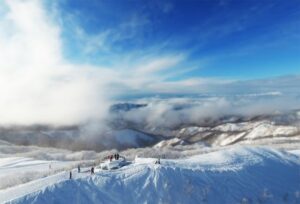
Key Factors in Choosing a Ski Resort for Investment
Accessibility
Proximity to major transportation hubs is crucial for attracting tourists. Resorts like Hakuba and Gala Yuzawa are easily accessible from Tokyo,
making them ideal for short-term rentals and quick getaways. Investors should prioritize resorts with good transportation connections for both domestic and international tourists.
Snow Quality and Weather Conditions
Reliable snow conditions are essential for ensuring high occupancy rates during the ski season.
Hokkaido, particularly Niseko, is famous for its consistent powder snow, which ensures strong demand from both international and domestic skiers.
Resort Facilities and Tourism Infrastructure
High-end accommodations, restaurants, and non-ski activities such as hot springs enhance a resort’s appeal.
Resorts with well-developed infrastructure, like Niseko and Tomamu, attract a broader international audience, commanding higher rental prices and sustained demand.
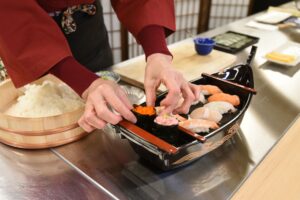
Real Estate Prices and Rental Demand
Understanding market trends is key to successful investment.
While property prices in areas like Niseko and Hakuba have surged due to international interest, emerging regions such as
Gunma and parts of Niigata offer lower entry points with untapped potential for future growth.
Cost Performance and Future Return on Investment
Evaluating the balance between purchase price and rental income potential is crucial for maximizing returns.
In recent years, Niseko and Hakuba have seen a surge of foreign investors, leading to a bubble in property prices.
In fact, land prices in Niseko are now comparable to central Tokyo.
Not only has real estate inflated, but hotel and restaurant prices in Niseko have also skyrocketed,
making it a destination primarily for affluent, high-level skiers.
This surge has led to concerns about the long-term sustainability of returns in such high-cost areas.
As a result, many skiers, particularly those looking for more accessible, local experiences with friendly izakayas and restaurants,
are expected to shift their attention to regions like Gunma and Niigata, where they can still enjoy high-quality snow without paying a premium.
Additionally, Tokyo residents tend to avoid flying to Niseko, preferring the convenience of Gunma and Niigata,
which offer comparable snow conditions but with far better access via the Shinkansen, allowing for day trips from Tokyo.
Foreign tourists are beginning to recognize this trend as well, and prices for resort apartments in places like Yuzawa, Niigata, are gradually rising.
However, properties in these areas can still be purchased for less than one-tenth of the price of those in Niseko,
making them an appealing alternative for savvy investors.
While areas like Niseko and Furano, with planned infrastructure improvements and growing international recognition,
offer significant potential for future capital appreciation, regions like Gunma and Niigata present even more attractive entry points.
We believe these regions offer solid returns at a fraction of the cost compared to the highly saturated markets of Niseko and Hakuba,
making them ideal for investors seeking long-term growth without the inflated price tags.
Conclusion
In this two-part series, we explore the investment potential of Japan’s ski resorts.
While this first article provided an overview of Japan’s top ski destinations and their appeal, the second article will focus on the most promising regions
for real estate investment, based on key factors such as accessibility, rental demand, and growth potential.
Japanese ski resorts in regions like Nagano, Gunma, and Niigata offer exceptional opportunities for property investors.
Established areas such as Hakuba in Nagano guarantee strong rental demand and property appreciation,
but the rapid price inflation in resorts like Niseko has made investors seek more accessible and affordable alternatives.
Emerging regions like Gunma and parts of Niigata, where property prices are still reasonable, offer excellent growth potential and solid returns.
Investors can benefit from a more attractive balance between purchase price and rental income,
especially as these areas continue to gain popularity among both domestic and international tourists.
With Japan continuing to enhance its ski infrastructure and attract increasing numbers of international visitors,
now is the perfect time for investors to capitalize on these emerging markets, particularly in regions that still offer affordable entry points and promising future returns.
Are you ready to explore the investment potential in Japan’s thriving ski resort market?
Whether you are looking to invest in established regions like Hakuba and Niseko, or
emerging markets such as Gunma and Niigata, our team can guide you through the process.
Contact us today for expert advice on how to maximize your returns.
Reach out via email at yamamoto@yamamoto-property.jp
or visit our website at https://www.toshihikoyamamoto.jp/
Related articles:
Japan travel guide
https://www.japan.travel/en/guide/skiing/
Gala Yuzawa (Niigata) ガーラ湯沢
https://gala.co.jp/winter/english/
Naeba (Niigata) 苗場
https://www.princehotels.com/en/ski/naeba/
Minakami Kogen (Gunma) 水上高原
https://www.minakamikogen200.jp/en/
Tsumagoi (Gunma) 嬬恋
https://www.visit-gunma.jp/en/spots/palcall-tsumagoi-ski-resort/
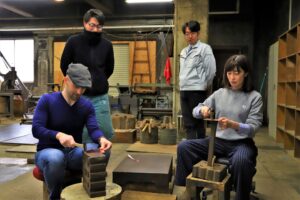
Toshihiko Yamamoto – Founder and Lead Broker, Yamamoto Property Advisory
Toshihiko Yamamoto is the founder and principal broker of Yamamoto Property Advisory,
a distinguished real estate brokerage in Tokyo that specializes in luxury residential and investment properties for an international clientele.
His firm caters to discerning investors seeking premier properties for personal use and income-generating whole buildings for investment purposes.
A licensed real estate broker in Japan, Mr. Yamamoto holds an MBA from Bond University in Australia
and a Certified Commercial Investment Member (CCIM) designation from the CCIM Institute in the United States.
His extensive international experience, having lived abroad in Australia and the United Kingdom, equips him
with a nuanced understanding of global real estate trends and the unique needs of foreign investors.
With over two decades of experience in international business, Mr. Yamamoto has successfully conducted business with clients from more than 20 countries.
As a seasoned property investor himself, he provides informed guidance to his clients as they navigate the intricacies
of the Japanese real estate market to secure optimal investments.
Discover more in his book, “The Savvy Foreign Investor’s Guide to Japanese Properties: How to Expertly Buy, Manage,
and Sell Real Estate in Japan,” available on Amazon, iBooks, and Google Play.
Connect with us through social media on Instagram, WhatsApp, and LINE for further information and expert assistance.



About the book
Amazon.com Link

